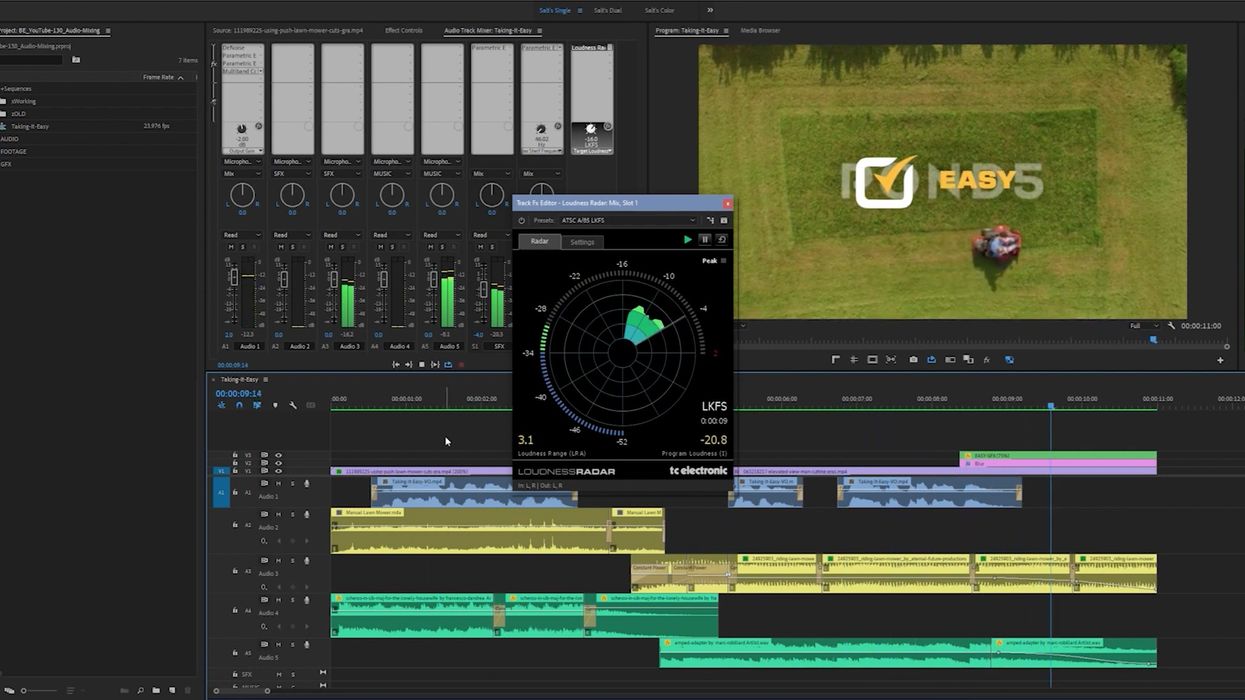Sound Tips for Mixing Audio with the Loudness Radar in Premiere Pro
Elevate your audio mixing game with these Premiere Pro tips.

If there’s one area that film and video professionals absolutely should ignore, it’s audio. I mean, who cares, right? We’re gonna blow you away with beautiful visuals and cinematography. Why even bother with sound design and audio mixing, right?
If this sounds like a joke, it’s because it is.
But it’s also apparently how many creatives tackle their films and video projects these days. Audio is almost always an afterthought, when, in truth, it should be just as important as camera selection, directing, cinematography, or any other aspect of production.
Still, whether you recorded quality audio (like you should be doing) or not, much of the post-production audio work has to do with your mixing. A lost art that also does not get much love and attention.
Luckily, we’ve found some great tips on audio mixing from the team at Better Editor, as they’ve compiled some great real-world advice and tricks for mixing audio with the loudness radar in Premiere Pro. Let’s take a look at some of the best nuggets below...
Mixing Audio in Adobe Premiere Pro
So this is cool, all the advice which is shared in this video feature from the “Better Editor” comes from an interview with real-world sound designer and audio editor Dallas Taylor of Defacto Sound.
This means all this advice truly represents some of the current best practices and most up-to-date industry standards for working with sound and audio in all forms.
Looking specifically into Premiere Pro, though, the video is nicely broken down into nine different sections (which we’ve shared in their timestamped layout below). These different sections cover everything from trimming dialogue, to working with the Parametric EQ and Multiband Compression, to adjusting levels and using Premiere Pro’s Loudness Radar.
Here are the chapters laid out:
- 0:00 - Intro
- 1:29 - Trimming Dialogue
- 2:42 - Audio Track Mixer Effects
- 3:50 - Removing Reverb with Parametric EQ
- 5:32 - Easy dialogue clarity with Parametric EQ and Multiband Compression
- 7:34 - Adding Submix Tracks
- 8:46 - Scooping music and sound effects with Parametric EQ
- 10:12 - Adjusting levels
- 11:00 - Using Premiere Pro's Loudness Radar
I personally found this video to be quite fascinating, again, because you just don’t see too much content these days which is so pointedly focused on audio and sound design.
I’m torn on why this is. Part of me thinks that sound and audio advice just isn’t as sexy as cinematography and directing, perhaps. But also I think that good audio, as pointed out in the video, when done right isn’t really recognized at all.
Instead, when you’ve properly trimmed, mixed, and adjusted your audio using all these tools like the Parametric EQ, Multiband Compressor, and Adobe’s Loudness Radar, the end result will simply sound like it should—which is to say, you might not notice it at all.
How do you feel about audio and sound design, though? Did any of the tips in this video resonate with you?
Sound off in the comments below!
Source: Better Editor











